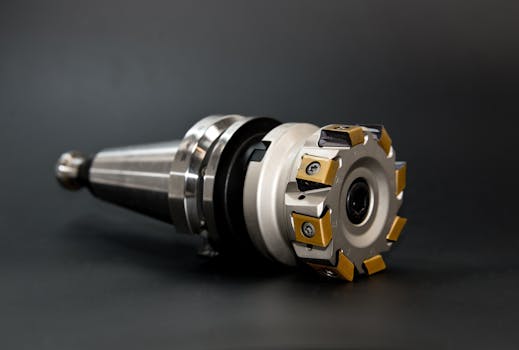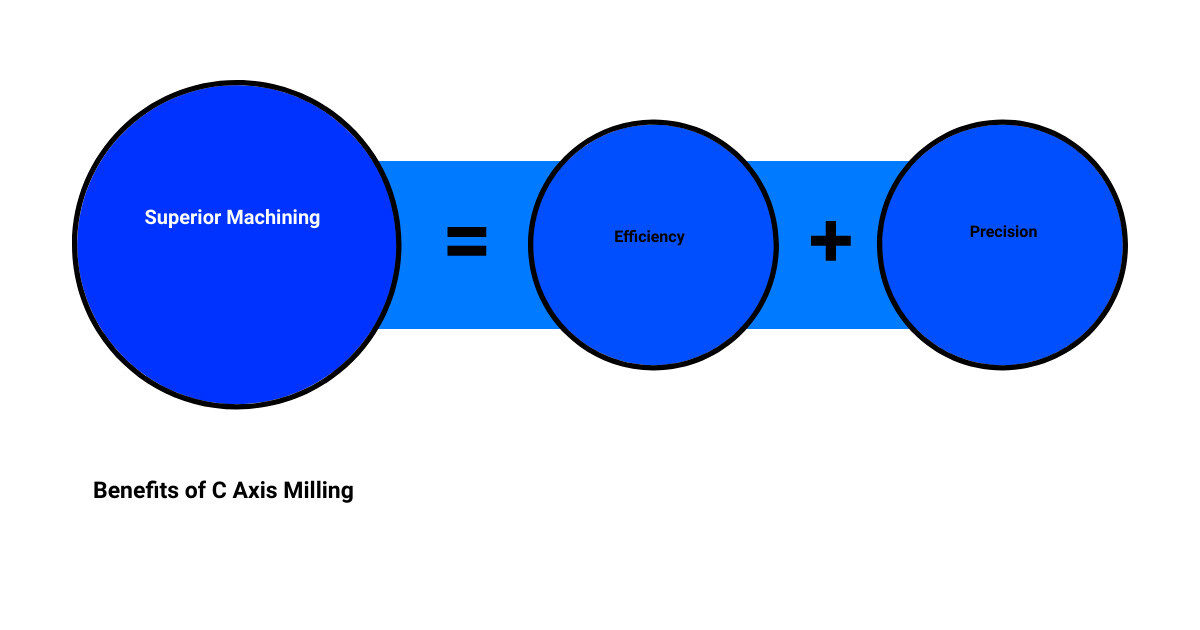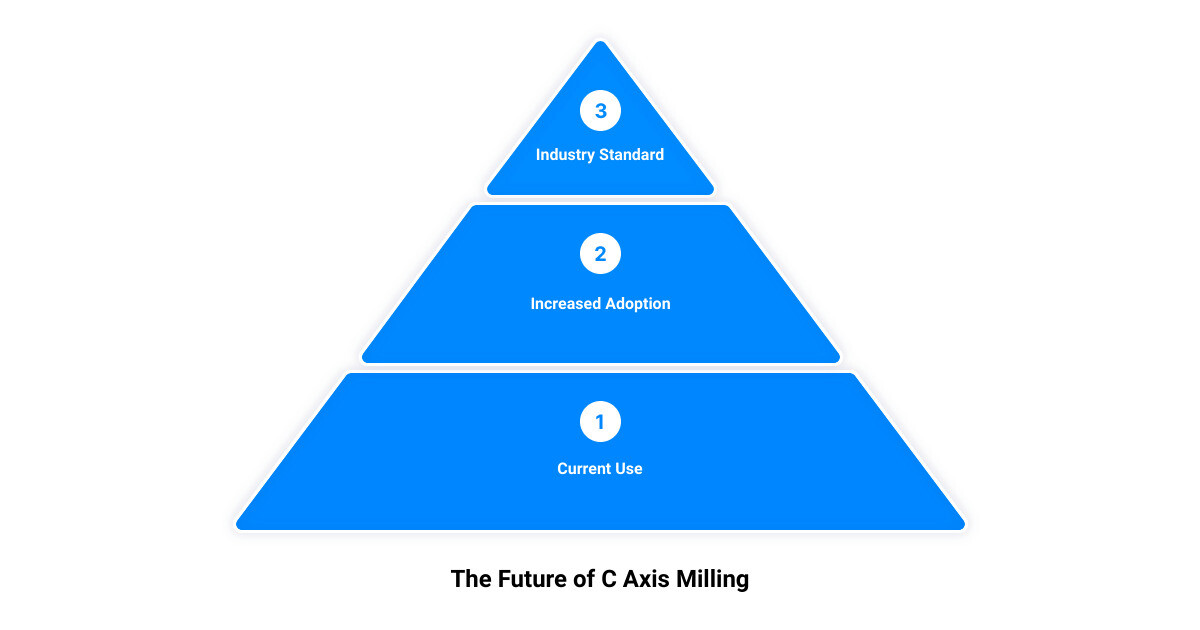In the intricate world of CNC machining, the power of C axis milling often goes unnoticed. Yet, it is this precise functionality that brings about unparalleled precision and versatility, transforming the CNC lathe from a simple turning tool into a multi-axis machining powerhouse.
Understanding the C axis functionality in CNC lathes is like unlocking a new dimension of precision in machining. This rotational axis adds a new level of versatility and accuracy to the machining process. It enables simultaneous machining on multiple surfaces of the workpiece, significantly reducing setup time, improving surface finish, and enhancing the overall capabilities of the lathe. From contouring and multi-axis machining to thread cutting and milling, the C axis functionality is a game-changer in the world of precision machining.
In this article, we will dive deep into the art of C axis milling, exploring its workings, benefits, and how it is leveraged by companies like TMC Technologies to deliver high-quality CNC lathe parts and additional machining services. Whether you are a seasoned manufacturer in need of top-tier components or an industrial machinery company seeking to ensure the accuracy and longevity of your machinery, understanding the power of C axis milling is key to unlocking precision in your operations.
So, are you ready to unlock the power of C axis milling? Let’s get started.
Understanding the Basics: What is the C Axis on a Mill?
Delving into the world of milling machinery, it’s essential to grasp the role of the C axis. In the context of 5-axis machining, the C axis is one of the two extra axes that provide rotational movement, adding to the traditional three linear ones (X, Y, and Z). This unique rotational ability is what enables the C axis to carry out complex machining tasks that surpass the capabilities of traditional 3-axis systems.
The Role of the C Axis in 5-Axis Machining
In a 5-axis CNC machine, the A, B, and C axes represent rotations around the X, Y, and Z axes respectively. The C axis, specifically, rotates around the Z-axis. This additional axis facilitates complex machining operations, such as cross-drilling, cross-milling, and creating angled features.
By integrating the C axis, a CNC machine can position the live tool at precise angles, significantly enhancing its machining capabilities. This enables the production of intricate parts that would be impossible or highly challenging with a 3-axis system.
The C Axis: Rotation Around the Z-Axis
The C axis’s rotation around the Z-axis is a game-changer in the field of CNC machining. It allows the machine to rotate 360 degrees, offering unprecedented versatility in part production. This rotation capability is what makes the C axis an integral part in the milling process, especially when it comes to creating complex shapes and geometries.
With the C axis, the machine can perform operations on multiple sides of a part without needing to reposition it. This not only saves considerable time but also ensures a high degree of precision in the final product.
Understanding the role of the C axis in 5-axis machining is the first step towards leveraging its full potential. As we delve deeper into the intricacies of C axis milling, you’ll discover how it brings efficiency and precision to your machining operations.

The C Axis in Action: How it Works on a CNC Lathe
Stepping into the world of CNC lathes, you’ll find an ingenious partner in the C axis. This functionality allows the CNC lathe to perform tasks that were previously only possible with milling machines, thus expanding its capabilities exponentially.
The C Axis and the CNC Lathe: A Perfect Pair
In the heart of a CNC lathe, the C axis emerges as a critical component. It refers to the rotational axis of the lathe, synchronized with the X and Z-axis movements, providing a new dimension of versatility and precision. This enables the workpiece or spindle to rotate in tandem with the other motion axes, thus facilitating complex machining operations that require rotation.
The pairing of the C axis with a CNC lathe allows for simultaneous machining on multiple surfaces of the workpiece, a feature that is particularly useful for producing components with intricate geometries such as cams, grooves, and thread milling. The ability to rotate the workpiece or spindle with such precision eliminates the need for repositioning the workpiece or adjusting the tooling angle for certain operations, saving time, and increasing efficiency.
The C Axis: Facilitating Complex Machining Operations
The role of the C axis extends beyond just rotation. When combined with live tooling, it enhances the capabilities of CNC lathes, enabling milling, drilling, and other secondary operations. The C axis allows the live tool to be positioned at precise angles, facilitating complex machining operations, cross-drilling, cross-milling, and angled features.
This functionality not only reduces cycle times by minimizing tool changes and eliminating the need for additional setups but also ensures consistent accuracy and surface finish across all surfaces. The result is a significant reduction in rework or manual finishing operations, improved part quality, and an overall boost in productivity.
In the realm of thread cutting and milling operations, the C axis proves to be a game-changer. By synchronizing the rotational movement with the linear feed, threads can be cut or milled with high precision and repeatability, a valuable feature when producing threaded components like screws, bolts, and fittings.
In the world of CNC lathes, the C axis is proving to be a powerful ally, facilitating complex machining operations with ease and precision. With TMC Technologies, mastery of C axis milling is well within your reach.

The Benefits of C Axis Milling: Efficiency and Precision
In the realm of CNC machining, the C axis presents a multitude of advantages that elevate both the efficiency and precision of milling operations. It’s not just about achieving the desired forms and features, it’s about doing it in a manner that optimizes resources, time, and ultimately, the final output.
Reducing Setup Time with the C Axis
One of the key benefits of C axis functionality in CNC lathes is the significant reduction in setup time. The C axis eliminates the need for repositioning the workpiece or adjusting the tooling angle for certain operations. This functionality allows machining from various angles without the need for additional setups, significantly reducing overall setup time and increasing efficiency. This means you can get your components faster and your production line keeps moving, addressing one of the major pain points for manufacturing companies.
Enhancing Accuracy and Surface Finish with the C Axis
Another notable advantage of C axis milling is the improved accuracy and surface finish of the final product. The C axis allows for precise positioning and orientation of the workpiece during machining, ensuring consistent accuracy across all surfaces. Moreover, the tool maintains the correct cutting angle relative to the workpiece orientation, which leads to a superior surface finish. This eliminates the need for rework or manual finishing operations, saving time and resources while ensuring your components meet the highest quality standards.
Versatility of the C Axis: Beyond Traditional Milling
The C axis functionality also adds a new level of versatility to CNC lathes, allowing them to perform tasks traditionally associated with milling machines. By enhancing the capabilities of CNC lathes, the C axis allows for complex machining operations, cross-drilling, cross-milling, and angled features. This expanded range of operations means that a broader scope of work can be undertaken on a single machine. No longer are you limited by the capabilities of traditional milling methods. With the C axis, you have the flexibility to create intricate designs and features with high precision.
In essence, the benefits of C axis milling extend beyond just precision; it’s about efficiency, versatility, and the quality of the final product. With TMC Technologies’ expertise in C axis milling, you can unlock these benefits and take your manufacturing process to the next level.
TMC Technologies: Mastering C Axis Milling
In the realm of precision machining, TMC Technologies has firmly established itself as a trusted partner for industries looking for high-quality CNC lathe parts. Their mastery of C axis milling is a testament to their commitment to delivering the best in CNC machining services.
TMC Technologies: Delivering High-Quality CNC Lathe Parts
At TMC Technologies, the focus is not just on meeting the industry standards but exceeding them. With an emphasis on precision, accuracy, and quality, they strive to provide CNC lathe parts that stand the test of time. The result is CNC components that boast tight tolerances, precise finishes, and complex shapes, ensuring the longevity of your industrial machinery.
Their investment in advanced CNC technology, coupled with a team of highly trained machinists, allows them to deliver CNC lathe parts manufactured to exact specifications. These parts are subjected to stringent quality standards, ensuring that you receive only the best components for your machinery.
TMC Technologies: Offering Additional Machining Services
But the offerings of TMC Technologies go beyond just CNC lathe parts. They provide a comprehensive suite of CNC machine shop services, ensuring that you have a one-stop solution for all your CNC machining needs. These services include CNC milling and turning, CNC sawing and drilling, CNC grinding and lapping, CNC threading and tapping, and more.
In addition, for those custom applications that require a unique solution, TMC Technologies offers tool design and fabrication services. This means you get components that are not just top-tier quality but also customized to your specific needs.
With TMC Technologies, you’re not just getting a supplier; you’re getting a partner committed to your success. Their mastery of C axis milling and dedication to providing high-quality CNC lathe parts and additional machining services make them an ideal choice for manufacturers seeking advanced machining capabilities.

Conclusion: The Future of C Axis Milling
The Growing Importance of C Axis Milling in Modern Manufacturing
In an industry that never stops evolving, the importance of C axis milling in modern manufacturing cannot be overstated. As manufacturers strive to streamline their processes and create more complex and precise components, the demand for CNC machines with C axis functionality is rapidly growing. The ability to perform simultaneous multi-axis machining, reduce setup time, increase accuracy, and enhance surface finish are just a few of the compelling reasons why C axis milling is quickly becoming the new standard in manufacturing.
The C axis, with its ability to rotate the workpiece in synchronization with the X and Z-axis movements, offers unparalleled versatility and precision. This added level of functionality allows CNC lathes to perform tasks traditionally associated with milling machines, thereby expanding the scope of work that can be undertaken on a single machine. This means that even parts with the most intricate geometries can be machined with high precision and efficiency, making C axis milling an invaluable tool in the arsenal of modern manufacturers.
How TMC Technologies is Leading the Way in C Axis Milling
When it comes to mastering the art of C axis milling, TMC Technologies is a name that stands out. They have firmly established themselves as leaders in the field, leveraging their deep expertise and cutting-edge technology to deliver custom-designed machines and tools that meet the most exacting requirements of their clients.
Their commitment to quality and precision, as well as their fast turnaround times, make them a trusted partner for businesses in various industries. TMC Technologies’ advanced 3 and 4 axis CNC machining capabilities ensure that every part produced meets the highest standards of accuracy and repeatability.
Moreover, their flexibility and dedication to customer satisfaction have earned them a reputation as a reliable supplier of high-quality CNC lathe parts, offering additional machining services for custom applications. As the demand for C axis milling continues to grow, TMC Technologies is well-positioned to meet this demand, offering advanced solutions that are not just efficient and precise, but also cost-effective.
In conclusion, the future of C axis milling looks bright, with increasing demand driven by the need for more versatile and efficient manufacturing solutions. As a leader in this space, TMC Technologies is poised to continue driving innovation and delivering high-quality, precision-engineered CNC lathe parts, ensuring their clients stay ahead in an ever-evolving industry.